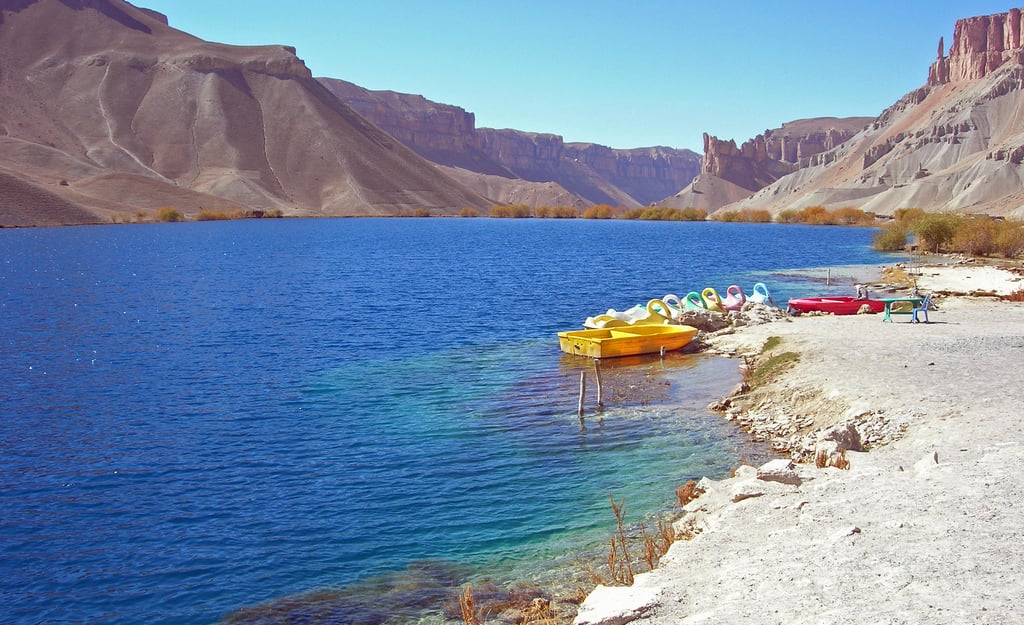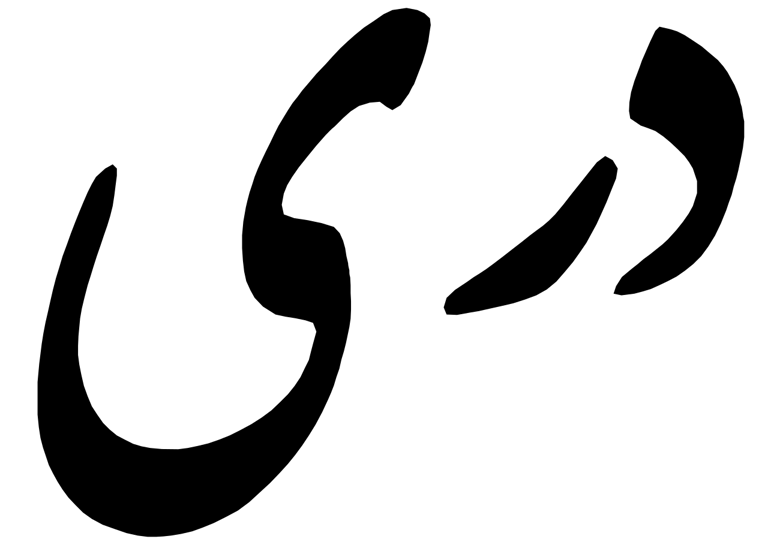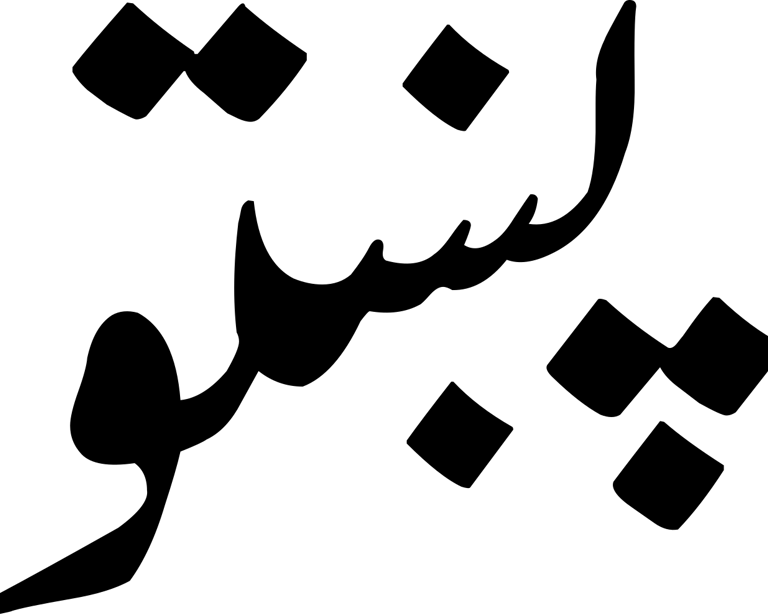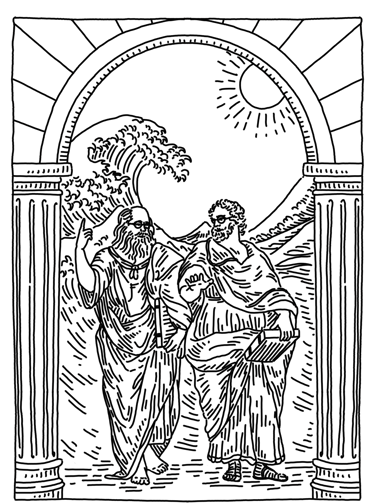Reading Journal : Afghanistan
Results of the Literary Journey in Afghanistan
7/14/20259 min read


Illustrated on the homepage: the Blue Mosque of Mazâr-e Charîf
Above: Band-e Amir Lake
47 Years of War…
Whether in history books or literature, war is an unavoidable subject. Since the communist coup of April 1978, Afghanistan has experienced an almost uninterrupted series of armed conflicts. Here is a brief timeline:
1978, the Saur Revolution (named after the second month of the Persian calendar, in Dari) : a coup by two communist parties, who then violently repress the population. It’s important to remember that communism is notably characterized by atheism—highly significant in a deeply religious society.
1979, the USSR invades Afghanistan with the help of the ruling communist party. The mujahideen resistance organizes itself into seven Sunni movements (mostly Pashtun) and two Shia movements (mostly Hazara), using the mountainous border with Pakistan as a rear base. While these nine factions are united against the Soviet invasion, major ideological differences divide them. To give an idea, the ideological spectrum ranges from Jamiat-e Islami (Islamic Society), advocating a moderate form of Islamism and later opposed to the Taliban, to Hezb-e Islami (Islamic Party), aligned with the Deobandi school of thought, the same school that inspired the Taliban.
In 1989, the Soviet Union withdraws, but civil war continues between the mujahideen and the communist government.
In 1992, the communist government collapses, and the mujahideen turn their weapons against each other in a struggle for power. In 1994, the students (“talibans” in Pashto) take up arms and join the fight.
1996, the Taliban seize power. While civil war seems to diminish, the repression of the population increases. Acts of revolt emerge: for example, in 1997, the Taliban attempt to destroy the Blue Mosque of Mazâr-e Charîf, a monument deeply significant in Afghan culture (hundreds of thousands gather there to celebrate the New Year and honor a saint’s tomb). In retaliation, the local population massacres 3,000 Taliban fighters. The following year, the Taliban retake the city and massacre its inhabitants.
2001, the US-led international coalition intervenes, topples the Taliban regime. However, the Taliban do not surrender and prepare to wage a guerrilla war against the coalition and the new Afghan republic. It’s worth noting that the coalition is quickly perceived by locals as an occupying force.
2021, the last US troops withdraw, and the Taliban return to power. As in 1996, the peace is only relative (I’ve only identified one pocket of resistance: the National Resistance Front in Panjshir), but the population continues to endure harsh repression.
Thus, most Afghans have lived their entire lives in a state of war. Unsurprisingly, If Afghanistan Were Told to Me (Si l'Afghanistan m'était conté) by Alain Coppolani and The Pashtuns, A Great People Without a Country (Les pachtounes, un grand peuple sans pays) by Alain Lamballe offer detailed insights into the effects of war on Afghan politics, economy, and demographics. I highly recommend reading them.
The Pashtuns
Historically, Afghanistan and Pakistan were both born out of British colonization, and the borders were drawn without consulting the local populations. This led to the creation of the Durand Line, which separates Afghanistan from Pakistan and remains the subject of heated debate today. This border cuts through the region historically inhabited by the Pashtuns, the majority of whom now live in Pakistan, with a smaller portion in Afghanistan. Nevertheless, Pashtuns are a minority in Pakistan but form the majority in Afghanistan, where they hold political power.
Alain Lamballe’s book, The Pashtuns, a Great People Without a Country (Les pachtounes, un grand peuple sans pays), seeks to provide a comprehensive understanding of a century-old debate: the creation of a Pashtunistan. The author examines five possible scenarios, ranging from Afghanistan absorbing Pakistan’s Khyber Pakhtunkhwa province to the creation of an entirely new state.
To understand the origins of this debate, it’s best to look at the Pashtuns’ way of life in the mountains between Pakistan and Afghanistan. Fortunately, we have The Guardians of the Pakistani Mountains (Les gardiens des Monts pakistanais) by André Singer and Toby Molenaar (photographer), who lived in a Pathan village (the Pakistani term for Pashtuns) in the 1970s. Although these mountains are officially under Pakistan's control, in reality, the state exercises no authority there. The Hindu Kush boasts over a dozen peaks exceeding 6,200 meters, and an impressive number of peaks over 4,500 meters. As the usual home of the Pashtuns, it is a futile endeavor for any outsider to pursue them there.
Pashtuns live in small villages, which one might be tempted to call anarchist communities, as they submit to no political authority. There is no village chief, and each family is independent: any family that must rely on others for sustenance (i.e., does not farm) is seen as inferior. Disputes are resolved in only two ways: by convening a jirga, a council of village elders who settle matters, or by the rifle—an ever-present companion to the Pashtuns.
Honor is the central concept in Pashtun society. When honor is affronted, blood vengeance is almost the only acceptable remedy. If the community deems a murder justified, the matter ends there. Otherwise, a cycle of vendetta ensues, with death tolls potentially reaching dozens.
The Pashtuns practice Sunni Islam, and life is punctuated by prayer. Saying that the Hindu Kush Pashtuns are devout is an understatement, as most boys receive only religious education, and it is rare for girls to be educated at all. Pakistan has tried to establish general education schools in these mountains, but these attempts ended in arson and fatalities.
This overarching notion of honor is especially embodied in the lifestyle of women, marked by a strict practice of purdah. In practical terms, women spend most of their time in secluded areas surrounded by high walls to avoid being seen by men. When a woman must go out—to work in the fields or fetch water—she must wear a burqa to shield herself from prying eyes. A man traveling through an area where he might encounter a woman would be well-advised to bring a child along, who can scout ahead to ensure that if any woman is present, she is properly veiled.
Why such precautions? Because seeing an unveiled woman who is not family dishonors both the man who saw her and the woman who was seen. Ethnologist André Singer collected several testimonies and stories where the killing of both the man and the woman was deemed perfectly legitimate by both families. Sometimes, to prevent a vendetta cycle, the father himself carries out the execution of his own child.
In my view, this book by André Singer and Toby Molenaar is a must-read, not only for the beautiful photographs it contains but also because it brings depth and context to the insights offered by the works of Alain Lamballe and Alain Coppolani. A major advantage of this book is that Toby Molenaar is a woman, giving her access to information usually denied to men.
In any case, these books together help illuminate the geopolitical importance of the Hindu Kush in both Pakistani and Afghan affairs. The clearest example of this is that this mountain range also served as the rear base of the Taliban guerrilla after their fall in 2001, and it has proven impossible to dislodge them ever since.
Literature (La littérature)
Unsurprisingly, war and repression are deeply imprinted on Afghanistan's recent literature. The criticism of war and oppression even cost the life of Sayd Bahodine Majrouh (1), and the testimonies of these hardships are central to the works of Mohammad Hossein Mohammadi, Spôjmaï Zariâb, and Homeira Qaderi (2). To end on a lighter note, we will also mention Afghan Legends and Customs (3).
1. Sayd Bahodine Majrouh: An Incredible Discovery
Sayd Bahodine Majrouh, of Pashtun ethnicity, was born in 1928. From what I understand, he belonged to the Afghan minority practicing Sufism, the esoteric branch of Islam. Sufism, as he presents it in his book Laughing with God: Sufi Aphorisms and Tales (Rire avec Dieu, aphorismes et contes soufis), is a relationship one might call friendly with religion, giving pride of place to humor. This work is a collection of thoughts from famous Sufis, illustrated with quotes such as (sorry if the translations are bad) :
"I prefer the company of rogues full of humor to that of grumpy readers of the Holy Scriptures."
— Juneyd, The Lives of the Great Men of God
After seeing the well-fed and well-dressed slaves of ‘Amid, the Fool exclaims to the sky: "You, Almighty Lord of Earth and Heaven! Look at me: see your creature, see your slave—and go learn from 'Amid how to take care of your slaves!"
— Attâr, The Conference of the Birds
"I am much more afraid of future sins than of those of yesterday: I know what I did—but worse may yet happen!"
— Sâqiq Balkhi, Nafahat-ul-Hikam
This book offers both an introduction to Sufism and insight into Majrouh's religious thinking: he is far from a fundamentalist.
The second book I read by him is Suicide and Song (Le suicide et le chant), a collection of Pashtun women’s popular poetry. The poetic form is the landay, meaning "the brief" in Pashto. Majrouh describes it as poems composed of two free verses of nine syllables each, with no mandatory rhyme but strong internal rhythms. The landays composed by Pashtun women differ from those of men because, being uneducated, they include fewer references. The themes also differ, reflecting daily realities. Majrouh’s selection includes many landays on true love—contrasting with customary forced marriages—hatred of forced marriage, calls to heroism for men, servitude, exile, and sexuality (many focus on adultery).
Most of the poems collected by Majrouh come from refugees and resistance fighters during the communist massacres. They circulated either written, when the author was literate, or recorded on cassettes and sung (landays are traditionally sung). A telling sign of women’s condition during this time: none of the collected landays is signed. The resistance fighters were generally strict, and women were not allowed to write poetry freely.
Here is an example of a landay:
In secret I burn, in secret I cry,
I am the Pashtun woman who cannot reveal her love.
These two books reveal a Majrouh who loved art, freedom, and equality. His inclinations are also evident in his masterpiece: Ego-Monster (Ego-Monstre).
This two-volume poetic and philosophical tale develops Majrouh’s thoughts. Initially published in 1973, he continued revising it until his death in 1988. The first volume, The Midnight Traveller (Le Voyageur de Minuit), which lends its name to the complete French edition, is the most accomplished. Majrouh narrates how the Ego, manifested through the thirst for power and religion, destroys everything in its path. Although I have no hard proof, I sense that the second volume, The Lovers’ Laughter (Le Rire des Amants), was written after the 1978 communist coup: the denunciations are far more direct, communism is explicitly criticized, and religious fundamentalists (the mujahideen) are described without disguise—only their names are missing. This bluntness diminishes the poetic tone, making it less polished. Such unveiled criticism led to his assassination in 1988, though the final perpetrators remain unidentified.
Nevertheless, this tale is highly recommendable, both enjoyable and thought-provoking. Given the targets of his critique, such a story could not have been born in France, much like the landays—it’s a true window into Afghan literature.
2. Life in Afghanistan
Cain’s Plain (La plaine de Caïn) by Spôjmaï Zariâb, The Red Figs of Mazar (Les figues rouges de Mazâr) by Mohammad Hossein Mohammadi, and Dancing in the Mosque (Danser dans la mosquée) by Homeira Qaderi all portray everyday life in Afghanistan, overshadowed by armed conflicts and religious repression. None of these stories ends well: death, forced marriages, physical violence, disease, moral prohibitions, fear, and despair are central themes. I particularly appreciated The Red Figs of Mazar for the diversity of its stories and perspectives; especially memorable are the dead recounting a vendetta during an unnamed armed conflict, and Leyli's Desert, about the American intervention in 2001.
Dancing in the Mosque is an autobiographical account spanning the author's youth to her exile. A particularly striking moment is when Homeira Qaderi secretly establishes a school for young girls, risking discovery by the Taliban.
3. Afghan Legends and Customs (Légendes et coutumes afghanes)
As a reminder, this book by Ria Hackin and Ahmad Ali Kohzad is quite old, based on investigations from the 1930s, and neither author was a professional sociologist or ethnologist. In some respects, the book has aged: legends, tales, and customs are rarely contextualized. This is especially evident in the customs section: Afghan marriage ceremonies are described, but it’s unclear whether these apply equally to Hazaras and Pashtuns, what level of wealth is needed for such a ceremony, or whether it’s specific to Sunnis.
Nevertheless, the book offers another vision of Afghanistan. Much of it focuses on the Bamiyan Valley, where life seems relatively gentle, and locals were attached to the giant Buddha statues, which the Taliban destroyed in 2001. The described marriage, although forced, was a grand festival featuring music, dance, singing—all forbidden today.
Historically, this book holds value as a gateway for the French public’s discovery of Afghanistan, since it is cited—directly or in footnotes—in nearly all other books on my list.
Towards New Horizons (Vers de nouveaux horizons)
Before leaving Afghanistan, here is an example of Dari and Pashto, both spoken in Afghanistan. On the left, the word "Dari" written in Dari script, and on the right, "Pashto" written in Pashto script.




And now, go to South Africa!
